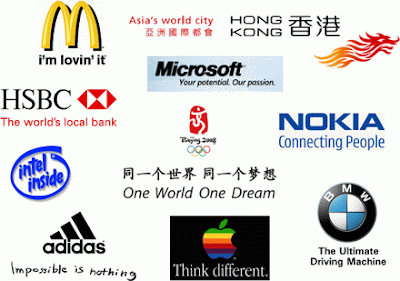
Do you consider this a good slogan?
In the world of branding and advertising, developing a catchy slogan or tagline is probably considered the Holy Grail of the craft. They can be found in practically anything and everything, from shampoo to milk powder, movies to museums, cities to churches, and cars to condos to credit cards.
Almost any organisation or institution worth its corporate salt would purvey these one or two liners, in the hope of raising mindshare, deepening heartshare, improving top-of-mind recall, and of course growing brand equity.
Effective corporate and product adages work well with or without the logos of the company or the brand. See if you can guess which ones below go with which brand?
Of course, marketing mottoes go best with their respective logos and can help to further reinforce an already strong brand identity. Used correctly, they provide a way to embody the ethoes of the brand, and what achieve that marketing nirvana which gurus call the brand essence.
Naturally, there are also terrible ones that don’t do any justice to their product or services. These are the straplines that seek to draw attention to themselves and try to break the clutter – often in an unfortunate manner.
See if you agree with the one below by Chupa Chups as observed by the avid marketer:
The use of overly clever and catchy soundbites is also prevalent in religion, and some can truly make you cringe. Like this one here:

Not very godly if you ask me (Source)
Of course, some organisations go to extremes, like this place here which gave absolutely no qualms about what it is (or aspires to be):
It is critically important, however, that taglines and slogans should not just be exercises in verbosity. The stronger and more impactful your slogan is, the more people will remember them – for good or evil. Being superb at sloganeering can sometimes impose a backlash on you when you fail to deliver on them.
Naturally, politics has seen its fair share of such examples. This very famous Presidential election mantra was on everybody’s lips more than a year ago. Almost everybody (myself included) were chanting this, brimming with hope, positive dreams and optimism for the future.
Unfortunately, the truth didn’t quite pan out that way. Just look at the graph below:
Knowing how things work in the US, this has led to an accompanying parody…
(Of course, some people will tell you that’s part and parcel of politics and electioneering…)
The moral of the story is that you should put the substance behind the spin. Don’t go on endless “brandstorming” exercises without having a clear idea of what your organisation and its products can or cannot do.
While having a cutesy call for customer action may sound great to your bosses and board members, have a think about what it really means.
Does it truly reflect what your organisation provides?
Can it be authentically applied across all your various customer touchpoints and interfaces?
How is the service experience like for your customers and do they feel that they’re ‘lovin’ it’?
Perhaps its also good to test your tagline with your various stakeholders and target audiences. Ensure that they are as widely representative as possible, so that you don’t end up with groupthink.
What do you feel about creative catchphrases and snazzy slogans?








Custom gifts at wholesale prices !china wholesale gift supply best gifts, business gifts,advertising gifts,corporate gifts,china gifts made in China.